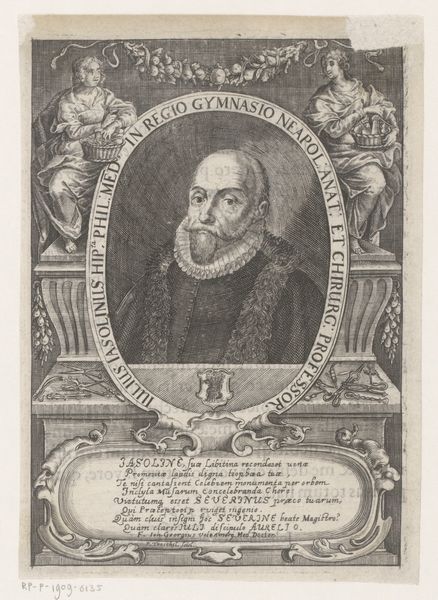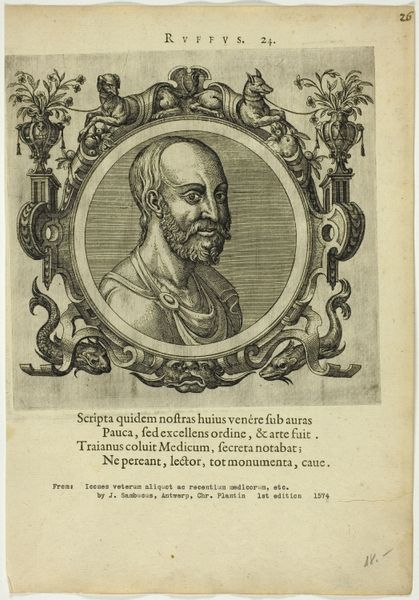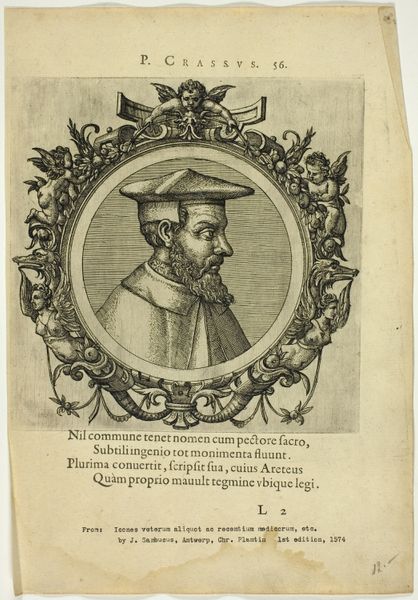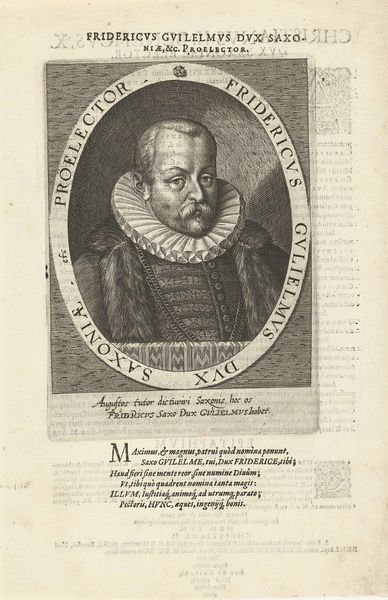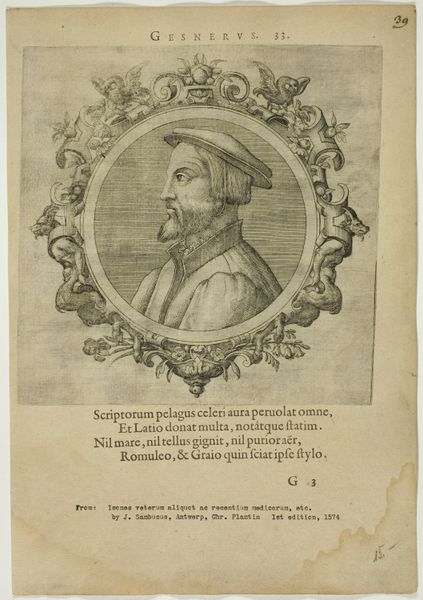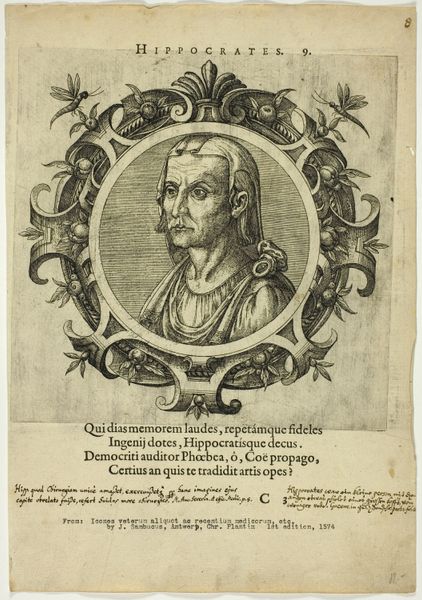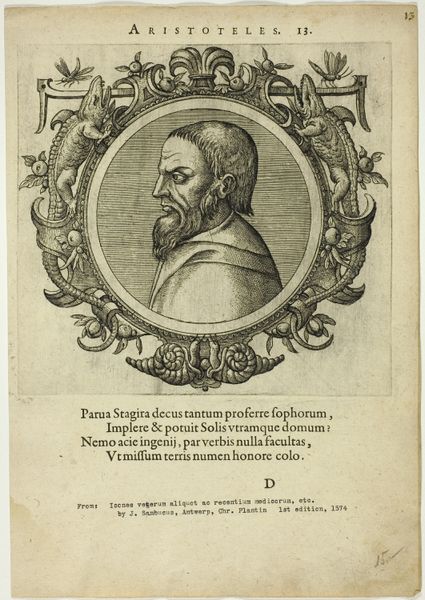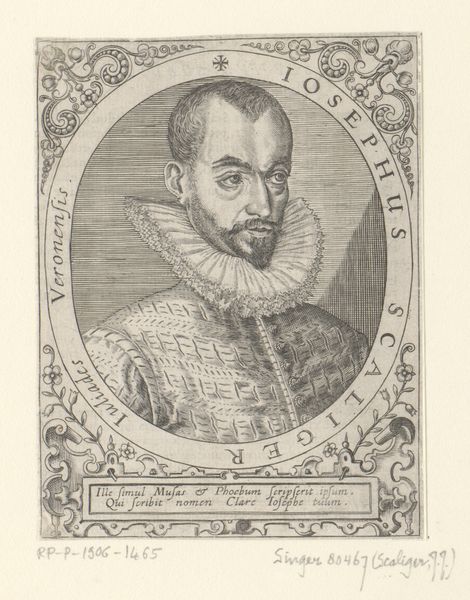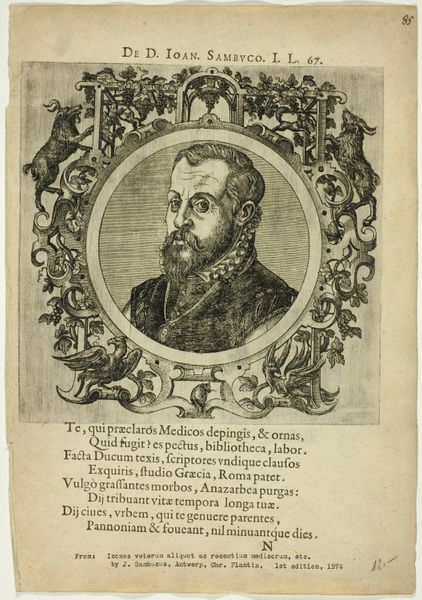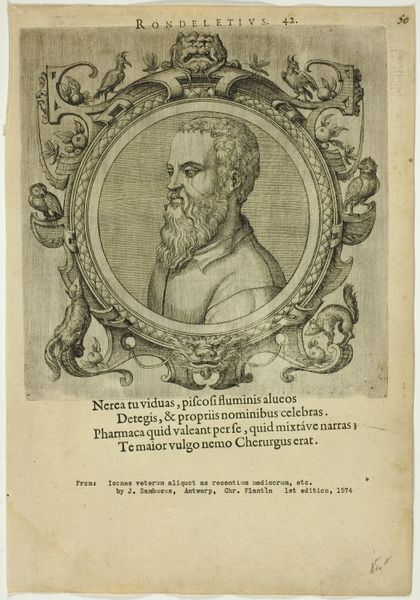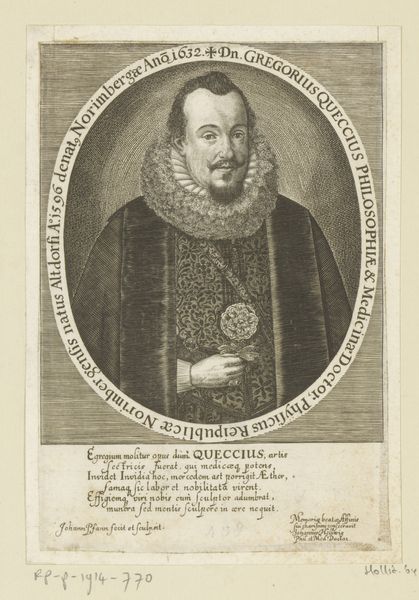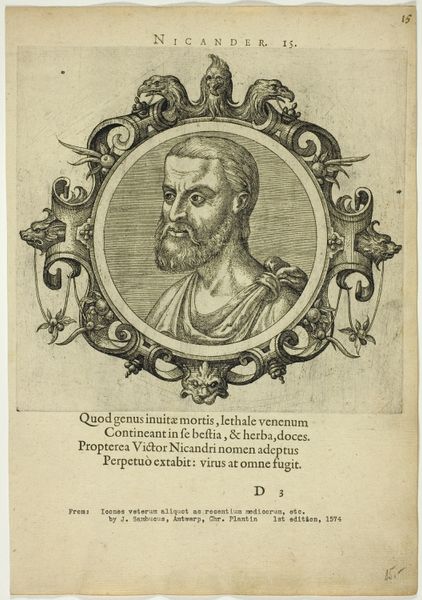
drawing, print, etching, paper, engraving
#
portrait
#
drawing
# print
#
etching
#
paper
#
11_renaissance
#
engraving
Dimensions: 197 × 188 mm (image/plate); 312 × 215 mm (sheet)
Copyright: Public Domain
This portrait of V. Cordus was made by Johannes Sambucus in the 16th century. It's an engraving, a medium that allowed for the relatively inexpensive reproduction of images and texts during the early age of print. Sambucus, who lived in what is now Slovakia, presents Cordus, likely a prominent figure of the time, within an elaborate frame adorned with classical motifs. This immediately tells us something about the values of the period – a reverence for classical antiquity, a desire to associate oneself with its ideals and aesthetics. The Latin text surrounding the portrait suggests an educated audience, deeply embedded within a humanist tradition that sought to revive classical learning. The emphasis on virtue and intellect speaks to the social aspirations of the sitter. To understand this image more fully, one might delve into the history of printing and humanist circles in 16th-century Europe, exploring the networks of scholars, artists, and patrons. Through such research, we begin to see the portrait not just as an image of an individual, but as a reflection of the social and intellectual world in which it was created.
Comments
No comments
Be the first to comment and join the conversation on the ultimate creative platform.

